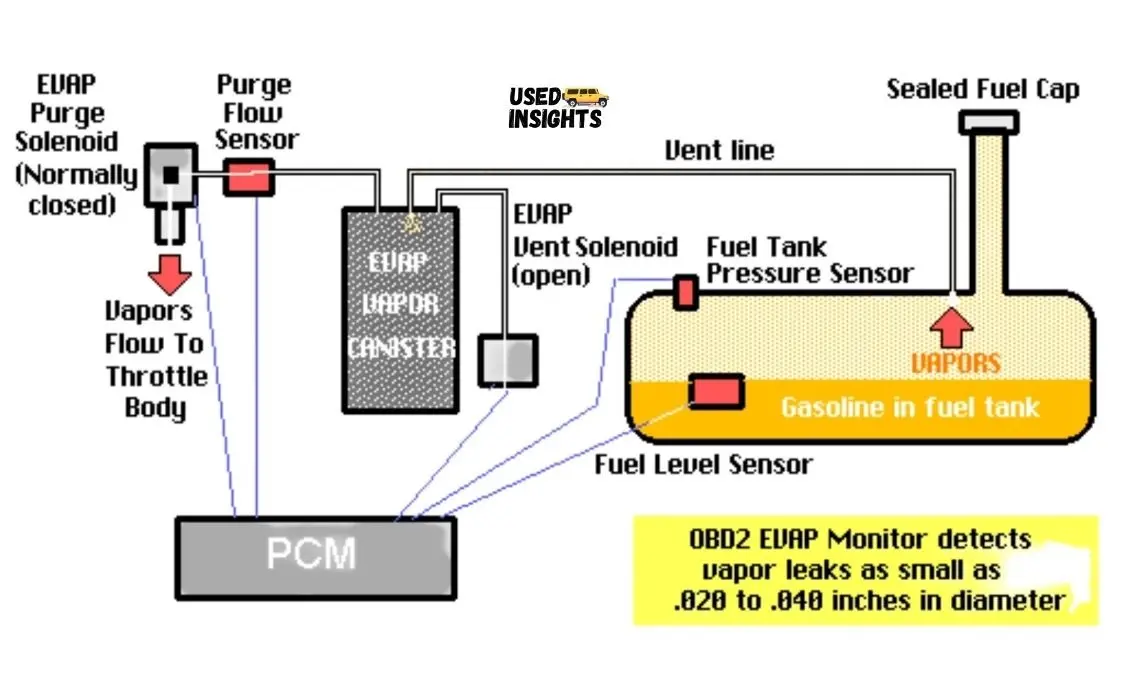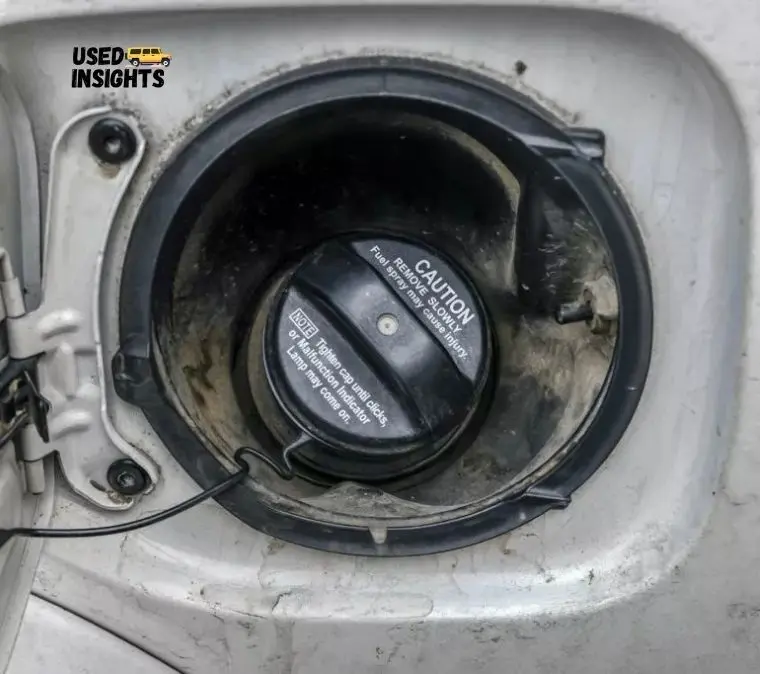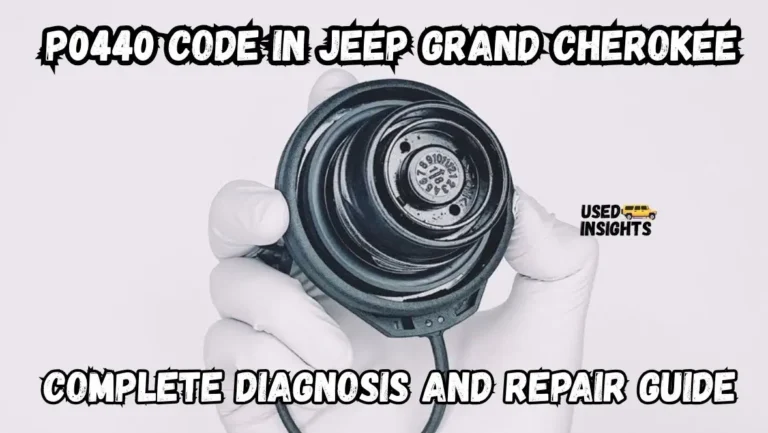Jeep Grand Cherokee owners frequently encounter EVAP system failures after accumulating substantial mileage on their vehicles. When the EVAP system experiences malfunctions, drivers will notice the check engine light illuminating on their dashboard, accompanied by diagnostic trouble code P0440.
Additional EVAP-related codes such as P0456 may also appear simultaneously. This issue affects multiple Grand Cherokee model years, particularly the 2015, 2016, and 2018 versions.
Resolving the P0440 diagnostic trouble code becomes straightforward once you understand the underlying causes of this malfunction. This comprehensive guide will walk you through the complete troubleshooting methodology for addressing code P0440 in your Jeep Grand Cherokee.
Understanding the P0440 Diagnostic Trouble Code
What Does P0440 Mean?
The P0440 diagnostic trouble code signals a malfunction within your vehicle’s EVAP (Evaporative Emission Control) system. This code appears when the Engine Control Module (ECM) detects irregularities or leakage within the fuel tank vapor management system. The code specifically indicates that the EVAP system is not functioning within its predetermined parameters.
EVAP System Fundamentals
The Evaporative Emission Control System serves as a critical environmental protection component in modern vehicles. This system prevents harmful fuel vapors from escaping directly into the atmosphere, thereby reducing carbon emissions while simultaneously improving overall fuel economy.
The EVAP system comprises several essential components working in harmony:
- Activated charcoal canister
- Canister purge control valve
- Canister vent valve
- Fuel tank assembly
- Connecting vapor lines and hoses
When any of these components fail or become damaged, the P0440 code will trigger, alerting you to the system malfunction.
How the EVAP System Functions
System Components and Operation
The complete EVAP system integrates multiple components including the fuel tank, ESIM (Evaporative System Integrity Module), fuel tank pressure sensor, vapor charcoal canister, vapor vent valve, purge control valve, and interconnecting hose assemblies. The pressure sensor continuously monitors fuel pressure levels within the tank.
Step-by-Step EVAP System Operation
Initial Vapor Capture Process: Once you start your vehicle, fuel vapors naturally migrate toward the charcoal canister, which functions as a temporary vapor storage reservoir. During this phase, the vent valve operates under computer control, opening and closing to perform system leak detection tests and normal operational cycles.
Vapor Processing Stage: The captured vapors then travel through dedicated hose lines into the purge valve assembly. This purge valve remains open during engine operation and closes completely when the engine shuts down, ensuring proper vapor management throughout different operational states.

Final Combustion Phase: The purge valve directs the collected fuel vapors into the engine’s combustion chambers, where they burn completely along with the standard air-fuel mixture, eliminating harmful emissions while recovering the fuel energy.
The entire EVAP system operates under the supervision and control of the ESIM module, which serves as the system’s central management unit.
ESIM Module: The System’s Control Center
Understanding the ESIM Module
The Evaporative System Integrity Module (ESIM) functions as the monitoring and control center for your Grand Cherokee’s EVAP system. Located within the rear driver-side fender area, the ESIM represents a crucial component specific to Jeep Grand Cherokee vehicles.
The ESIM module ensures proper containment of harmful fuel vapors throughout the entire EVAP mechanism while continuously monitoring for system leaks. Unlike traditional solenoid-based systems, the ESIM incorporates a sophisticated design featuring a switch mechanism, dual weights, and a diaphragm assembly to detect pressure variations and identify vapor leaks with precision.
Distinguishing Between P0440 and P0456 Codes
Code Comparison and Diagnosis
Your OBD scanner may simultaneously display both P0440 and P0456 codes when EVAP system problems occur. The P0456 code specifically indicates minor leaks anywhere within the EVAP system. In most cases, P0456 issues resolve through gas cap cleaning or replacement. Small cracks in hose connections and leak detector malfunctions also commonly trigger P0456 codes.
Conversely, the P0440 code typically indicates major malfunctions or significant leaks within the EVAP system. These problems usually originate from ESIM module failures, canister vent filter issues, or complete blockages in EVAP line assemblies.
Purge Valve Solenoid Issues: Both diagnostic codes can result from purge valve solenoid malfunctions. This particular problem is relatively easy to identify – if the fuel tank shows no pressure drop during testing, the purge solenoid likely requires replacement.
The diagnostic approaches and repair solutions for P0440 and P0456 codes share many similarities, making troubleshooting more straightforward once you understand the system fundamentals.
Recognizing P0440 Code Symptoms
Primary Warning Signs
Four distinct symptoms commonly indicate P0440 code presence:
Fuel Vapor Odors: You may detect fuel vapor smells both inside the passenger cabin and around the exterior of your vehicle, indicating vapor escape from the compromised EVAP system.
Fuel Pressure Irregularities: The fuel system may experience unexpected pressure drops, affecting overall system performance and efficiency.
Visible Component Damage: Physical inspection may reveal cracked or damaged EVAP hoses, charcoal canister deterioration, or other visible system component failures.
Emissions Test Failure: Your vehicle will likely fail required emissions testing due to the EVAP system malfunction, preventing registration renewal in many jurisdictions.
Top 5 Causes and Solutions for P0440 Code
1. ESIM Module Failure
Root Cause Analysis: ESIM module failure represents the most frequent cause of P0440 codes in Jeep Grand Cherokee vehicles. The module’s complex internal components can deteriorate over time, losing their ability to properly monitor and control the EVAP system.
Diagnostic Procedure: Perform a comprehensive smoke test to diagnose ESIM functionality. Connect a professional smoke machine to the service port located near the canister purge valve. If the ESIM cannot contain the smoke during testing, the module has definitely failed and requires replacement.
Repair Solution: ESIM replacement is the only effective solution for module failure. Begin by removing the driver-side rear wheel fender panel to access the module. Disconnect the electrical connector and hose assembly, then rotate the module counterclockwise for removal. Install a new O-ring seal and mount the replacement ESIM by reversing the removal procedure. Proper ESIM replacement will permanently eliminate recurring P0440 codes.
2. Damaged Vapor Hoses
Problem Identification: Cracked or damaged vapor hoses create system leaks that trigger P0440 codes. These hoses deteriorate due to age, heat exposure, and chemical breakdown from fuel vapors.
Diagnostic Method: Conduct a thorough smoke test to identify damaged hose locations. The smoke will escape from any cracks or holes in the hose assembly, making leak identification straightforward.
Repair Process: Carefully cut the wire ties securing the damaged hose section and remove it completely. Install a new hose of identical specifications, ensuring proper connection at both ends. Secure the new hose with appropriate clamps or ties to prevent future displacement.
3. Compromised Gas Cap or Fuel Inlet
Issue Description: Fuel vapor leaks can originate from damaged gas caps on traditional vehicles or fuel inlets on capless fuel systems. Large cracks in the gas cap or improper sealing of the fuel tank opening will trigger P0440 codes.
Troubleshooting Steps: If no visible damage is apparent, clean the gas cap and fuel tank opening thoroughly using WD-40 or similar cleaning spray. Clear the diagnostic code and perform a new scan. If the P0440 code returns, replacement becomes necessary.
Resolution: For damaged gas caps, direct replacement solves the problem immediately. Ensure the new cap matches your vehicle’s specifications exactly. In capless systems, fuel inlet replacement may require professional service due to complexity.
4. Malfunctioning Purge and Vent Valves
Failure Mode: When purge valves or vent valves become stuck in the open position, they cannot properly control vapor flow, resulting in P0440 code generation.
Testing Protocol: Use a smoke machine to test valve operation and identify stuck valves. The smoke pattern will reveal whether valves are opening and closing properly during the test cycle.
Correction Method: Replace faulty purge valves and vent valves with OEM or equivalent quality components. Proper valve replacement typically eliminates code recurrence permanently.
5. Charcoal Canister Leakage
Problem Source: Charcoal canister deterioration creates vapor leaks that the system cannot compensate for, triggering P0440 diagnostic codes.
Repair Solution: Replace the damaged charcoal canister with a new unit designed for your specific Grand Cherokee model year. Canister replacement requires careful attention to hose connections and mounting orientation.

Additional Diagnostic Considerations
Uncommon P0440 Causes
If standard troubleshooting doesn’t resolve your P0440 code, consider these less common potential causes:
1. EVAP Pressure Sensor Malfunction
Symptom Pattern: The pressure sensor transmits inaccurate pressure readings to the vehicle’s computer system. If your vehicle operates normally but the computer registers unexpected pressure drops, sensor failure is likely.
Repair Approach: Replace the faulty pressure sensor with an OEM replacement part. Proper sensor replacement should eliminate false P0440 code triggers permanently.
2. Electrical Wiring Problems
Issue Description: Damaged wiring connections between pressure sensors, purge valves, and other EVAP components can generate P0440 codes even when all physical components function properly.
Solution Method: After identifying wiring problems through systematic diagnosis, replace damaged wire connectors and repair any corroded connections. Ensure all connections are clean and properly secured to prevent future electrical issues.
Conclusion
Successfully resolving P0440 codes in your Jeep Grand Cherokee requires systematic diagnosis starting with the most common causes. The ESIM module represents the primary failure point, but thorough inspection of all EVAP system components ensures complete problem resolution.
Professional smoke testing provides the most reliable diagnostic method for identifying system leaks and component failures.
Regular maintenance of your EVAP system, including periodic gas cap inspection and hose condition monitoring, can prevent many P0440 code occurrences. When problems do arise, addressing them promptly prevents more extensive system damage and ensures your vehicle continues meeting emissions requirements while operating efficiently.

